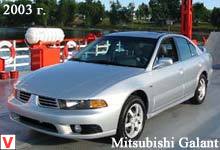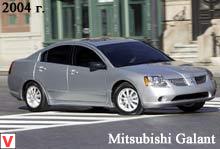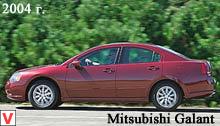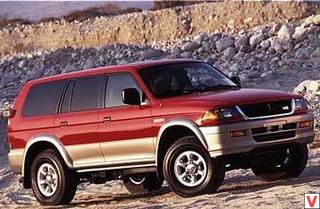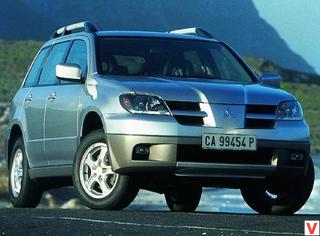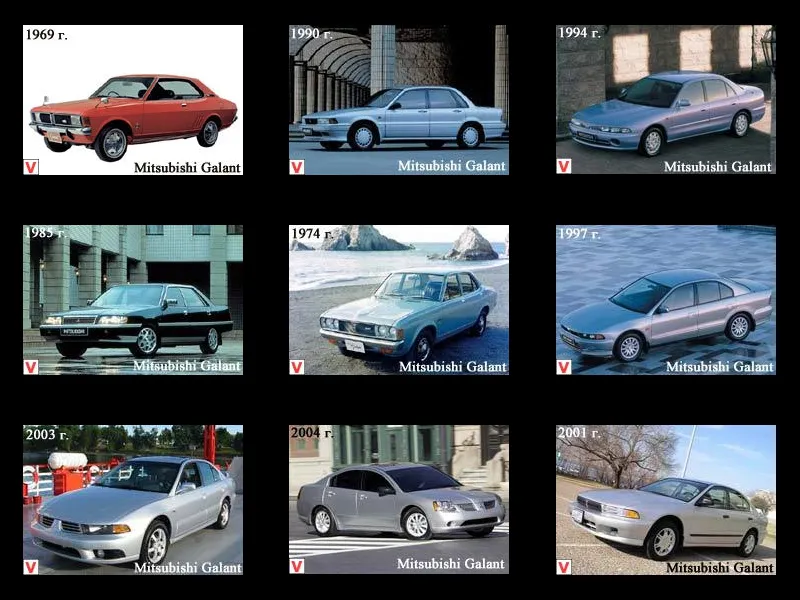
In the history of Mitsubishi, a car named Galant first appeared in 1969. So was named one of the modifications of the then model Colt. It was a small car with a classic layout, with a 1.5-liter engine and dependent spring rear suspension. A little later, on the basis of this car, they made a dynamic coupe Colt Galant GTO, a very high-tech for those times, with a two-shaft engine and a limited-slip differential. Colt Galant became the ancestor of a whole family of high-quality and prestigious cars, which subsequently won numerous victories in rally competitions and repeatedly received the awards “Car of the Year” for high consumer qualities.
Among the distinctive features of the first Galant were the aerodynamic “wedge-shaped” body shape, which created additional downforce, and the Saturn series engine with overhead camshaft and aluminum cylinder head. Thus, the Galant of 1969, embodied the best modern developments and technologies of its time, became the ancestor of an entire segment of the automotive market in Japan. In 1973, Galant debuted as an independent model. The car was a sedan and coupe.
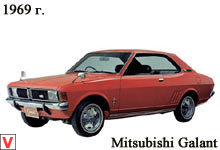
In some countries, sold under the name Mitsubishi Sapporo. In 1976, the spring rear suspension was replaced with a spring, and the balance shafts first appeared on the engines. In 1980, the body and engine range were updated, the rear suspension became independent. In 1983, Japan introduced a completely new Galant - a front-wheel-drive sedan of the middle class with engines equipped with electronic fuel injection. In Europe, cars were sold with inline "fours" of 2.0 or 2.4 liters, in the States - with a V-shaped three-liter "six".
In 1987, the company introduced the fourth generation Galant, more complex and technically sophisticated. Salon differed unusual design of the front panel and a large internal space. The smaller engines were equipped with multi-valve heads, there was an ABS in the brake drive. In addition to the front-wheel drive, there was also a complete one, with a center axle limited slip differential. To order it was possible to install a rear axle differential lock. Plus an independent suspension with automatic adjustment of the damping and maintaining the level of the body. True, all these technical delights were available only in the Japanese market, cars were exported in a simpler version.
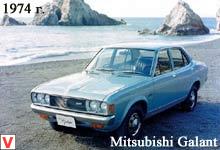
In 1992, the fifth generation Galant appears. It was slightly larger and heavier than its predecessor, differed more “rounded” design and a wide range of engines. The design of the chassis has become even more sophisticated: in the suspensions added levers and hinges, four-wheel drive and steering on all four wheels also underwent changes. Having a modern appearance and interior, the car retained all the best qualities of its predecessor: reliable handling, stable behavior at high speeds. This generation lasted only four years. In 1996, the world presented Galant number six. The car has grown a bit, got the upgraded engines, rich equipment and striking appearance.
In Japan, over the first nine months since the start of sales, more than 80 thousand cars have been sold. Galant won the local car competition 1997. The appearance of this generation is radically different from the previous car. The rounded “puffy” shapes, characteristic of the cars of the early 90s, disappeared. Forming the body surface is almost flat, with distinct edges of intersection, and this emphasizes the dynamism of the silhouette. Rapid change of generations of cars allowed to crystallize Mitsubishi's own corporate identity.
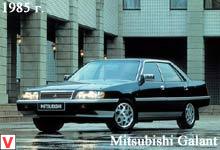
Unlike its predecessor, the Galant of this generation did not have a hatchback-like body, but the wagon reappeared (in Japan - under its own name Legnum). Gamma engines were more modest, but the Galant one of the first in the world began to be equipped with an adaptive automatic transmission (INVECS-II). And the second innovation was definitely revolutionary - gasoline engines with direct injection of gasoline into the cylinders (GDI). In general, the engines for the "sixth" Galant offered about a dozen, but the most common - it is in-line "four" of 1.8 / 140 hp. or 2.0 liters, as well as a V-shaped “six” with a volume of 2.5 liters. Transmission to choose either mechanical or automatic.
In 2000, Mitsubishi Active Stability Control (MASC) entered the standard equipment. In 2001, Mitsubishi Motors slightly updated the Galant lineup. All modifications of this model received in the standard equipment "sports" package VR4.
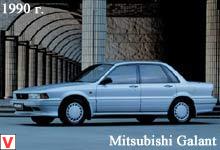
This kit includes a sports body kit, 17-inch wheels, anti-lock brakes, brake-force distribution, front airbags, a CD player and a Momo leather steering wheel. In versions Equippe and Elegance, the car received inserts "under the titanium" on the front panel, and the modification of the Elegance also includes side airbags, leather upholstery and climate control. The new look gave the car a very dynamic look, and also began to better reflect its image of a “car for the driver” - “driver car”. In the basic version, the Galant is equipped with a 131-horsepower engine. A version with a 2.4-liter diesel engine producing 142 hp and a top version with a 2.5-liter V6 is also offered.
Galant 2001 model year is available only in sedan and station wagon, and the hatchback has sunk into oblivion. In April 2003, the company unveiled a new generation of Galant for the US market at the New York Auto Show. It is based on the front-drive platform M1, created with the participation of Daimler Chrysler. The design was developed by Pasadena (California), and the design - in the North American design center DCX (Michigan) and the MMC research center in Okasaki (Japan).
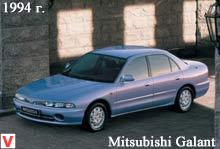
Overall dimensions Galant 4835x1840x1470 mm, wheelbase 2750 mm. The front suspension - reinforced McPherson strut, rear branded multi-link design with the effect of passive steering. Gamma modifications: DE, ES, LS and the top version of the GTS. On the DE and ES they install an engine of 2.4 liters R4 16V MIVEC (160 hp), and on the LS and GTS - 3.8 liters V6 24V (230 hp). For the 2.4-liter engine, a 4-speed adaptive automatic gearbox INVECS-II is provided, and for a 3.8 liter engine, a 4-speed Sportronic automatic transmission with manual shift is available.
For all versions, install disc brakes, air conditioning, 140-watt audio system, electric windows and mirrors, central locking and immobilizer. For the LS and GTS, ABS, traction control, leather upholstery, power seats, a 270-watt Infiniti audio system, automatic climate control, and more, are additionally provided, and an electric sunroof is available for an extra charge. Since 2004, Galant sedans have been selling only in the domestic Japanese market and in Taiwan. Production is carried out at the MMC plant in Nagoya, and Legnum station wagons are discontinued in the fall of 2003. Galant sales in Europe and other global markets are discontinued.
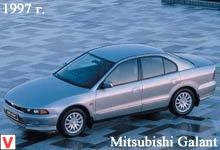
The Japanese Galant is available in versions VE (basic, front-wheel drive only), VR-G, and top versions of Viento (front-wheel drive or permanent all-wheel drive). The engine for all versions there is only one - 4G94 (R4 16V) with a volume of 2 liters with direct injection GDI (145 hp), complete with automatic 4-speed gearbox INVECS-II.
Other images auto Mitsubishi Galant

